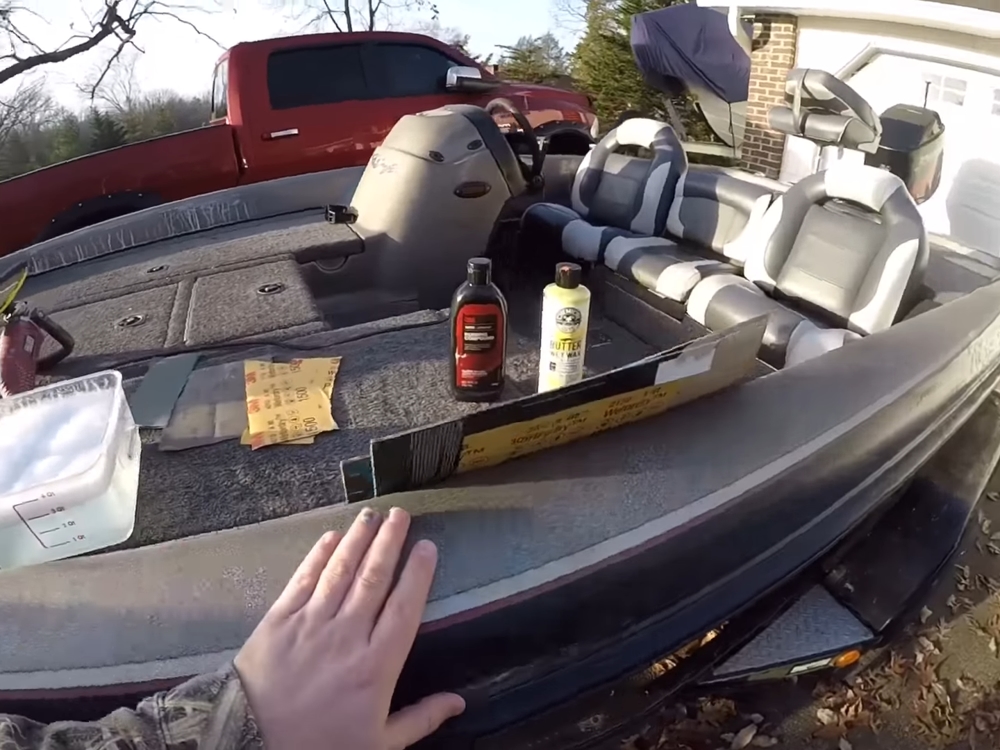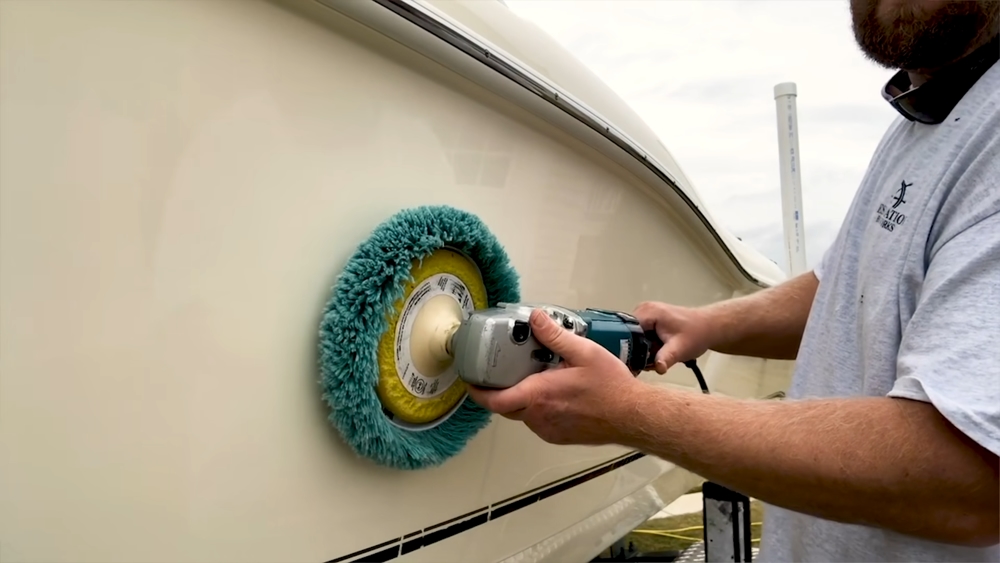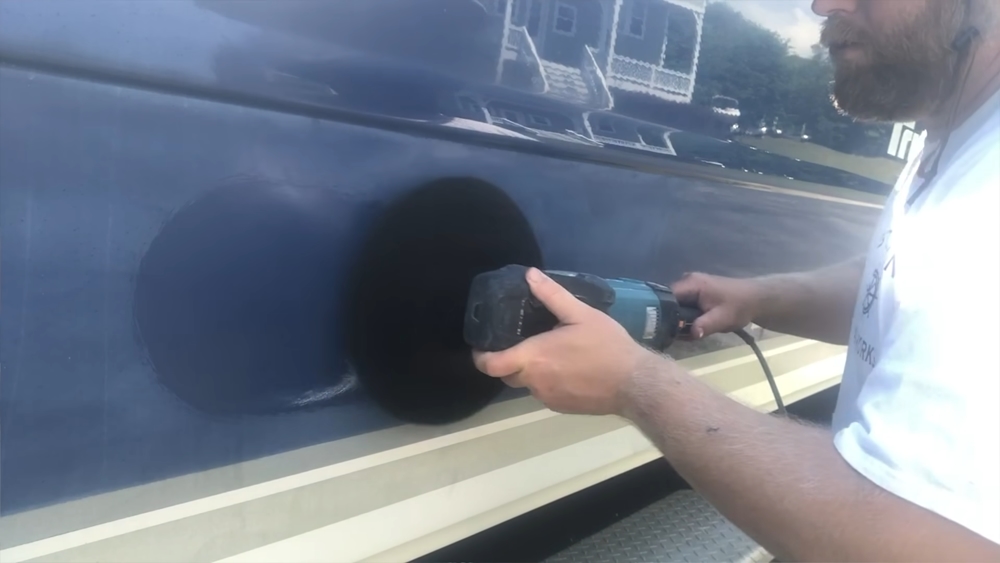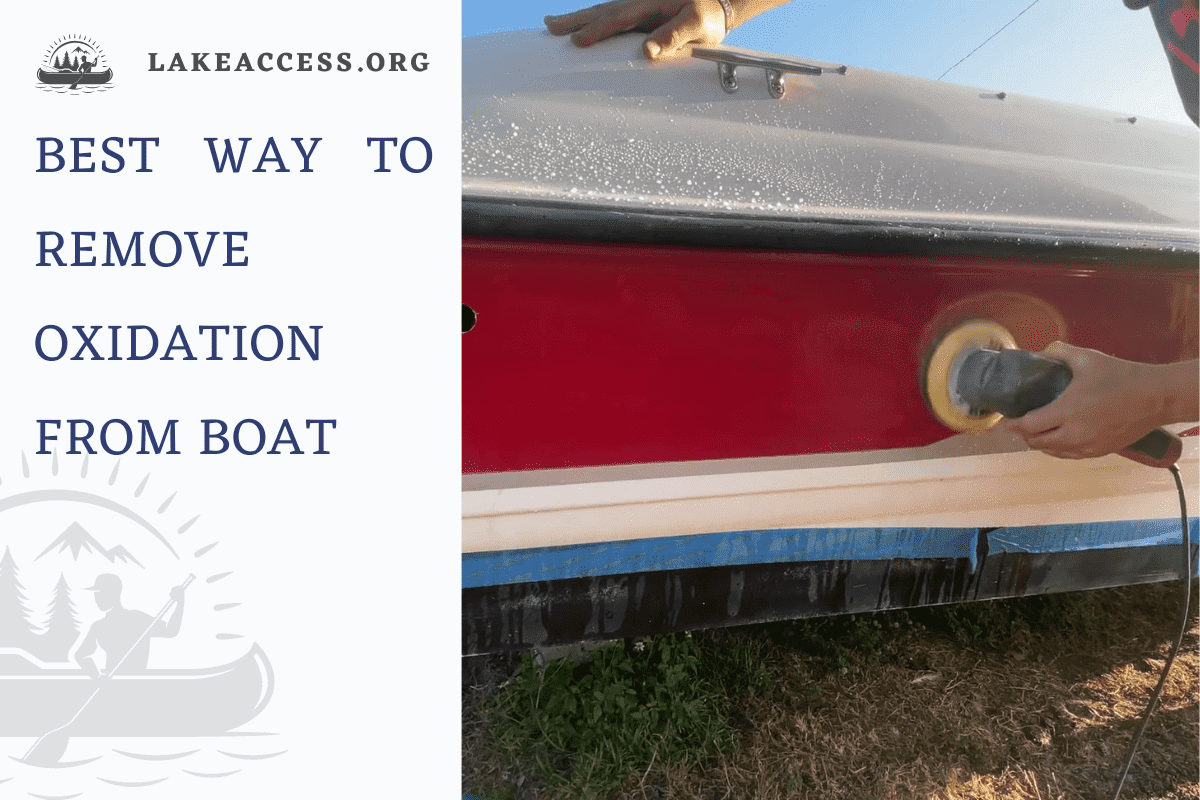Owning a boat is such a fantastic experience! Whether you love cruising on calm waters or embarking on thrilling adventures, taking care of your beloved vessel is essential. Not only does proper maintenance keep it looking stunning, but it also ensures that everything functions smoothly. However, exposure to the elements can take a toll on your boat’s appearance with time. That’s where the challenge of oxidation comes in! Picture this: a dull, chalky surface that doesn’t do justice to your sleek and stylish boat. But fret not, my friend, because I’ve got you covered!
This comprehensive article explores the magical world of boat restoration and shows you the secrets to removing that pesky oxidation. So get ready to embark on a transformative journey as we guide you step-by-step toward reclaiming your boat’s former glory. By the end of this reading, you’ll have all the knowledge and confidence you need to restore your boat’s pristine appearance, ensuring that it shines like a star on the water once more! Let’s dive in, shall we?
What is Oxidation?
One of the most common problems that boat owners face is Oxidation. Oxidation is a natural chemical reaction that occurs when oxygen interacts with certain materials, such as metal, fiberglass, or gel coat commonly found on boats. When exposed to sunlight, water, and air, the boat’s surface undergoes a process of oxidation, forming a layer of dull and faded material.
Causes of Oxidation
Several factors contribute to the oxidation of a boat’s surface. Exposure to UV rays, saltwater, pollution, and even bird droppings can accelerate the oxidation process. Neglecting regular cleaning and maintenance can also lead to the build-up of oxidation over time.
The Importance of Removing Oxidation
Removing oxidation is not just about restoring the boat’s visual appeal; it also plays a crucial role in protecting the boat’s structure. Oxidation weakens the surface, making it susceptible to further damage. By removing oxidation, you ensure the longevity of your boat and maintain its value.

Tools and Materials Needed
Before starting the oxidation removal process, gather the necessary tools and materials. Here are the items you will need:
- Soft-bristle brush
- Clean water
- Mild soap or boat-specific cleaner
- Oxidation remover or compound
- Microfiber or terry cloth towels
- Buffing pad or polishing wheel (if using a machine)
- Boat wax or polish
- Applicator pad or cloth
- Protective gloves
Step-by-Step Guide to Remove Oxidation
Preparation
Start by preparing your boat for the oxidation removal process. Here’s what you need to do:
- Choose a well-ventilated area to work in.
- Ensure the boat is dry and cool to the touch.
- Clear the surface of any loose dirt or debris.
Cleaning the Surface
Thoroughly clean the boat’s surface before applying any oxidation remover. Follow these steps:
- Dilute mild soap or boat-specific cleaner in clean water.
- Scrub the surface carefully with a soft-bristle brush to get rid of dirt and grime.
- Rinse the surface with clean water and let it dry completely.
Applying Oxidation Remover
Once the surface is clean and dry, it’s time to apply the oxidation remover. Here’s how:
- Shake the oxidation remover bottle well.
- Apply a small amount of the remover onto a clean microfiber or terry cloth towel.
- Rub the oxidation remover onto the boat’s surface using circular motions.
- Work on small sections at a time to ensure thorough coverage.
Buffing and Polishing
After applying the oxidation remover, it’s time to buff and polish the boat’s surface:
- If using a machine, attach a buffing pad or polishing wheel.
- Turn the machine on at a low speed and gently buff the surface.
- Work in small sections, moving the machine in overlapping motions.
- If buffing by hand, use a clean microfiber or terry cloth towel.
- Apply firm pressure and buff the surface using circular motions.
Final Touches
Once you’ve buffed the boat’s surface, it’s time for the final touches:
- Use a clean microfiber or terry cloth towel to wipe off any residue.
- Inspect the surface for any remaining oxidation spots and repeat the process if necessary.
- Apply a boat wax or polish to protect the newly restored surface.
- Use an applicator pad or cloth to evenly apply the wax or polish.
- Let the wax or polish dry, and then buff it off with a clean towel.

Best Oxidation Removal Compounds
A rubbing compound is a way to go if you want to remove Oxidation from your boat. These compounds are designed to buff away the top layer of Oxidation and come in various formulations. You can find them as liquids, pastes, or powders, and each has its own benefits and drawbacks.
No matter what type of rubbing compound you choose, using the right tool for the job is essential. An orbital buffer with a terry cloth bonnet is ideal; it will help distribute the compound evenly and avoid overheating the surface. Also, change out your abrasive compound often so you don’t cause permanent damage.
Meguiar’s M4916 Oxidation Remover
Many products can be used to remove Oxidation from boats, but the Meguiars M4916 takes the number one spot. Meguiar’s M4916 Oxidation Removers are an excellent option for removing light to moderate Oxidation on fiberglass and high-tech paint.
This product can remove stains, spots, and even scratches from surfaces of fiberglass boats with gel coat material and high-tech paint. Meguiar’s M4916 Oxidation Removers are also an excellent product for first-time polishers who want to be able to leave a shiny finish on their boat.
The diminishing abrasive material breaks down over time as you apply pressure and friction, giving you that final shine. Another upside to this product is that it is versatile so that it can be used by hand or by machine.
No products found.
Meguiar’s M6732 One-Step Compound
One application is all it takes to make your boat look brand new! Meguiar’s M6732 One-Step Compound is an easy way to remove Oxidation from your boat. Its unique formula removes the oxidization on contact and leaves a smooth, shiny surface.
It doesn’t matter if you have a fiberglass, aluminum, or steel boat. The Meguiars M6732 One-Step Compound is the fastest way to remove Oxidation and restore your boat to its original shine.
The Meguiars M6732 One Step Compound will not harm your boat’s finish, and it’s easy to use on fiberglass, aluminum, and steel. This product is safe for clear coat or single-stage paint finishes.
No products found.
Bio-Kleen M00707 Oxidation Removers
Bio-Kleen M00707 Oxidation Removers are the best way to remove Oxidation from your boat. Its unique formula removes the oxidization on contact and leaves a smooth, shiny surface.
The Bio-Kleen M00707 Oxidation Removers will not harm your boat’s finish, and it is safe for a clear coat or single-stage paint finish.
No products found.
Tips To Prevent Future Oxidation
The best way to prevent Oxidation is through regular cleaning, polishing, and waxing. This will help remove salt, dirt, and mold from your boat before they have a chance to cause any damage. In addition, it’s important to use soaps and marine-grade products specifically designed for boats. These products are super effective in preventing future Oxidation.
If you notice any signs of Oxidation on your boat, don’t wait until it becomes a bigger problem. Instead, apply the necessary products immediately and keep the hull sealed. With a bit of maintenance, your boat will look new for years to come.

What Chemicals remove Oxidation?
There are several chemicals you can use to remove Oxidation from your boat. Some of the most common include:
1) Oxalic acid: A white crystalline solid used to remove rust and scale from stainless steel. It’s also commonly used in woodworking to remove stains and blemishes.
2) Hydrogen peroxide: A bleaching agent found in hair bleach and whitening toothpaste, among other things. It can be dangerous if ingested, so wear gloves and protective clothing when handling it.
3) Vinegar: A mild acid that’s found in most kitchens. While vinegar won’t eat through the metal, it will remove Oxidation.
4) Lemon juice: Another mild acid found in most kitchens and a popular ingredient for homemade cleaning products. Like vinegar, lemon juice won’t eat through the metal, but it will remove Oxidation.
5) Baking soda: A mild alkaline found in most kitchens and a popular ingredient for homemade cleaning products. While baking soda won’t eat through the metal, it will remove Oxidation.
6) Salt: A mild alkaline found in most kitchens and a popular ingredient for homemade cleaning products. While salt won’t eat through the metal, it will remove Oxidation.
7) Abrasive scrubbing pads: Inexpensive and easy to find at any hardware store, these pads are often used to remove rust and Oxidation from metal.
8) Abrasive scrubbing pads: Inexpensive and easy to find at any hardware store, these pads are often used to remove rust and Oxidation from metal.
9) Baking soda: A mild alkaline found in most kitchens and a popular ingredient for homemade cleaning products. While baking soda won’t eat through the metal, it will remove Oxidation.
FAQs
How do I know if the metal is stainless steel or aluminum?
Stainless steel is much more resistant to saltwater corrosion and will not pit or corrode. If your boat has a stainless steel hull, you should be able to tell by running your hand along with it. If you can feel the ridges of the grain, then it’s stainless steel.
Do you have any tips for removing Oxidation from the bottom of a boat?
The bottom of a boat is the most challenging part to clean because you can’t get at it quickly.
If your boat has an aluminum hull, then baking soda will remove Oxidation. If your boat has a stainless steel hull, you can use vinegar to remove Oxidation.
What are the best practices for cleaning an aluminum boat?
Aluminum is not as durable as stainless steel and will corrode faster.
If you have an aluminum boat, then it’s crucial to remove Oxidation from the hull before it gets too bad. To prevent your boat from getting too much Oxidation, you should use marine wax once every couple of months.

